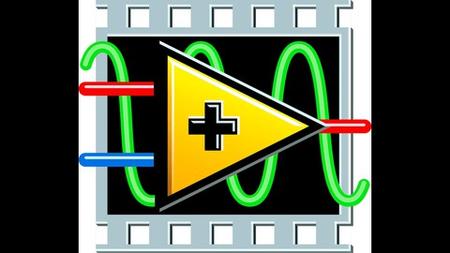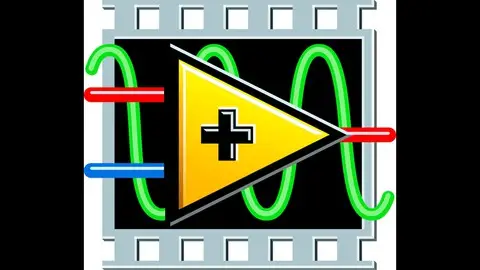Getting Started with Basics of NI- LabVIEW
Genre: eLearning | MP4 | Video: h264, 1280x720 | Audio: AAC, 44.1 KHz
Language: English | Size: 2.48 GB | Duration: 5h 40m
Genre: eLearning | MP4 | Video: h264, 1280x720 | Audio: AAC, 44.1 KHz
Language: English | Size: 2.48 GB | Duration: 5h 40m
LabVIEW for Beginners
What you'll learn
Understand what front panels, block diagrams and connector panels are. Fully understand data types in LabVIEW
Use debugging techniques editing and online modes correctly.
Create front panels based on look and feel techniques and color theory.
Create Sub VIs and document applications in LabVIEW as partner certified developers
Create applications under the LabVIEW University model Prepare, Acquire, Analyze and Present
Understand and select the available Compact DAQ hardware based on application
Recognize and apply LabVIEW best practices in project development.
Requirements
Basics Knowledge of Computer
Being able to use a PC at a beginner level
Description
This course will take an absolute beginner to intermediate level step by step, with examples, hints, quizzes, and projects. In video lectures, subjects are explained with examples and hints for better & easier programming. At the end of sections, there are quizzes for testing what is learned in the video lectures. There are three projects for using the knowledge of various subjects which were learned in the lectures. In the first lectures of the course, an introduction is done by explaining the LabView environment, LabView tools, and basics. After that, programming fundamentals like case structures, for & while loops, arrays, most of the useful array functions, and reading / writing data from a text file are explained. In the last parts, more LabVIEW-oriented topics like Sub VI's, property nodes, data acquisition, etc. are explained. Did you know that in industry, it is forbidden to use sequence structures within loops in LabVIEW and that it is best to use state machines for industrial safety reasons? Would you like to know more? Learn this and much more through theoretical sessions and many practices through code exercises that you must complete (including tests to test your knowledge and prepare). This course is designed as a training alternative to the LabVIEW Core I and II courses offered by National Instruments but the best, all in the same course and for a tiny fraction of what it would cost to do them elsewhere. Learn from a master engineer and instructor with more than a decade of experience working on industrial projects and training future professionals in various areas of engineering knowledge and with LabVIEW. Looking at the course and the grades of the students, many have managed to automate their machines and processes, others have achieved new jobs and many others have been certified with National Instruments, I assure you that you will learn so you already have experience programming in LabVIEW.
Who this course is for
People who want to develop programs in LabVIEW with the highest levels of quality based on good practices and development standards with LabVIEW and who seek to achieve work or business with the best technology companies in the world.
Students, researchers, and engineers in the field of mechanics of electronics, robotics, mechatronics, industries, medicine and …



